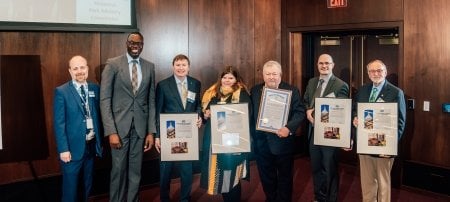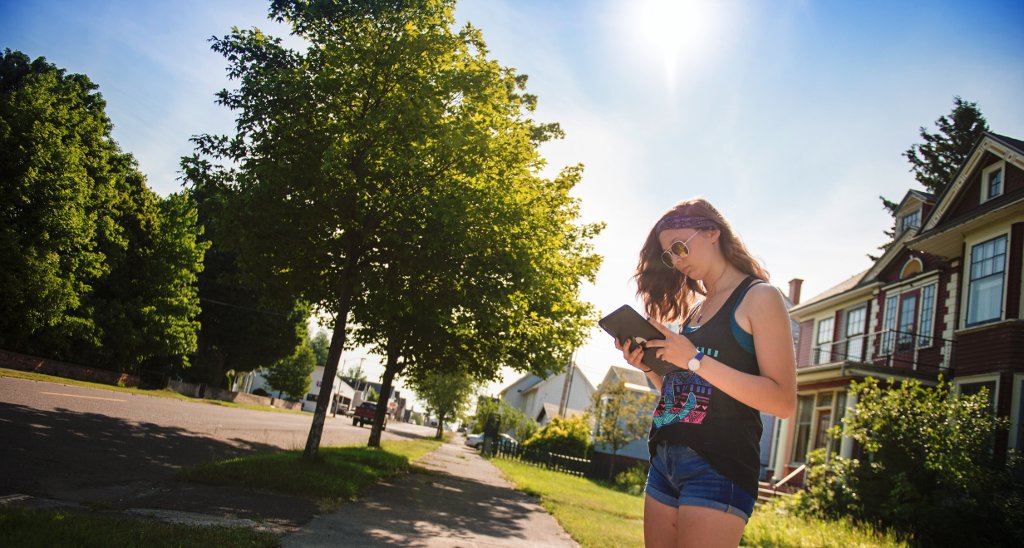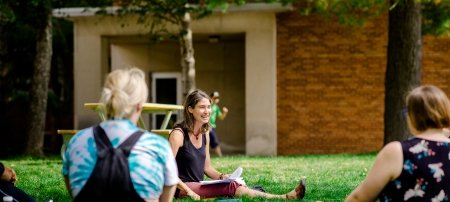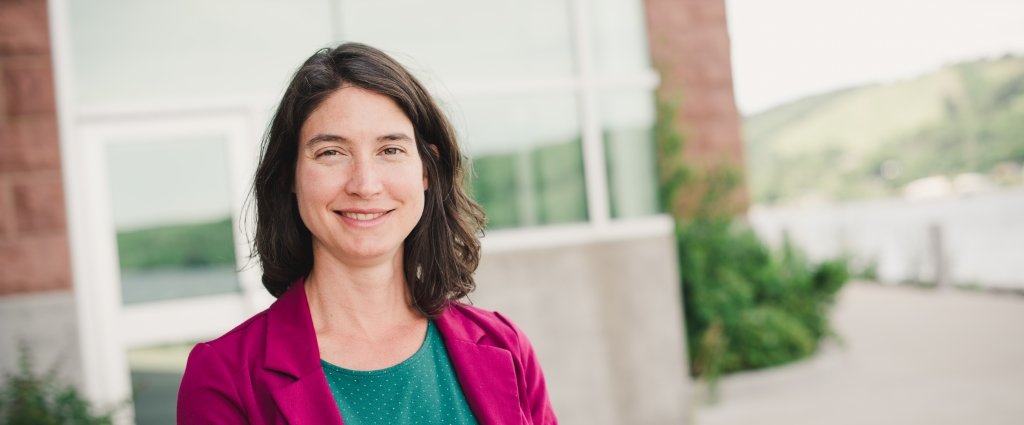Study: Art Strengthens Community Ties in Calumet

Art has long fostered human connection. Now a Michigan Technological University social sciences professor and her class are examining how art is working as a social glue in Calumet.
Students in Richelle Winkler’s Topics in Rural Community Sustainability class focused on the art scene in Calumet to better understand how the village’s First Fridays art tours benefit the community. On the first Friday of each month, Calumet’s participating art galleries and cafes extend their business hours late into the evening, offering refreshments, artist receptions, demonstrations, menu specials and more, depending on the season.
After surveying hundreds of visitors, touring buildings, speaking with business owners and leaders and interviewing artists, the students found that First Fridays have helped Calumet in many ways.
Winkler’s class presented their research findings at the Keweenaw National Historical Park Headquarters on April 29. “It has been neat to work with everyone, and you have made this a really positive experience for the group,” she said to assembled members of Main Street Calumet, art gallery proprietors and artisans.
“The goal for us is not to tell you what all the answers are, but to stimulate a dialogue.”
The project grew out of a conversation between Winkler and members of Main Street Calumet, said Travis Wakeham, a double major in anthropology and biology. “This is not just a Michigan Tech research project—this is a community-based project.”
The group used the Community Capitals Framework to organize their observations and to inventory community assets, Wakeham explained. This framework takes into account seven types of “capitals” found within a sustainable community: natural, cultural, human, social, political, financial and built. The lines between these capitals are blurry, and they often overlap, he noted.
“Eventually, First Fridays could contribute to all seven of these community capitals in different areas. When all of these capitals are in balance and working together, we have a vital economy, social inclusion and a healthy ecosystem,” he said.
Heather Hendrickson, a senior anthropology major, talked about the impact of art. “Paintings, ceramics, photos, wood- and metalworking . . . and other artwork depict and incorporate a natural environment, a reflection of the appreciation of the natural landscape,” she said. “Local proprietors and artisans are in a sense redefining Calumet’s historic landscape.”
Wakeham said that reclamation of old buildings also contributes to Calumet’s assets. “We can reinvest in the community and save a lot of the historical architecture, which is absolutely wonderful.”
Hendrickson said that First Fridays have promoted a bonding experience and a shared community identity. “Art is the physical manifestation of identity and togetherness,” she said. “First Fridays allow (community members) to be part of something—to foster a sense of community.”
The art program also increased social interaction. “First Fridays are a catalyst for bridging and bonding social capital,” said Hendrickson. “Ultimately, social capital is the foundation for all other community capitals.” First Fridays have the potential to further opportunities for education and leadership within Calumet, she added.
The group’s report emphasizes that point: “Social relationships are among the most important things that First Fridays participants value, and the development of social capital is perhaps the most key contribution of First Fridays.”
First Fridays have “the potential to spur a . . . process of holistic community development” and “the arts community could take advantage of additional opportunities to stimulate productive community change,” the report also says.
The group’s recommendations include a “visioning process.” Community members would collaborate on a vision for the First Fridays program to “help to coordinate advertising efforts, build and solidify social relationships, coordinate with external agencies, develop leadership, establish a political voice in the community and beyond, and attract more and more diverse visitors,” according to the students’ report.
Wakeham said that the project could extend into the summer. “This is hopefully just the start of a collaborative project.”
He also noted the important role of community engagement. “It wasn’t our question—it was the community’s question, and we just helped them find the answer and provided them with the information,” he said.
Stepping out of the classroom and into the community was a seamless transition for Winkler’s students, thanks to the partnership of Calumet residents including Lorri Oikarinen, a community member auditing the class. “Lorri added so much to the class,” said Winkler. “She had a lot of insight into what’s going on in the community and how something might be perceived. She brought the community perspective into our classroom.”
“I think it was a wonderful bridging experience between different age groups and between our communities,” said Oikarinen. “I have a new respect for college students. I was impressed by how much they care about our community. And I think I have friends forever now.”
Michigan Technological University is an R1 public research university founded in 1885 in Houghton, and is home to nearly 7,500 students from more than 60 countries around the world. Consistently ranked among the best universities in the country for return on investment, Michigan's flagship technological university offers more than 185 undergraduate and graduate degree programs in science and technology, engineering, computing, forestry, business, health professions, humanities, mathematics, social sciences, and the arts. The rural campus is situated just miles from Lake Superior in Michigan's Upper Peninsula, offering year-round opportunities for outdoor adventure.




Comments